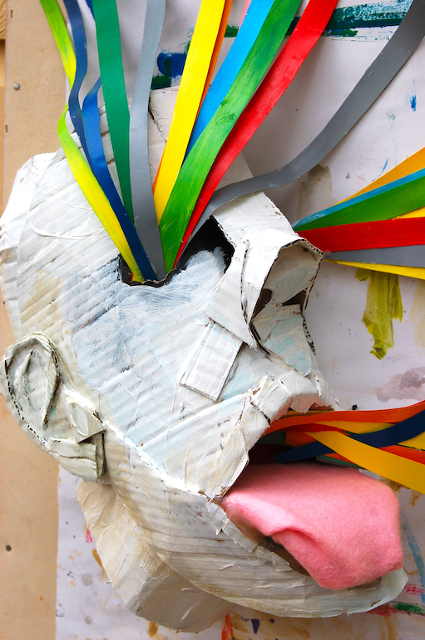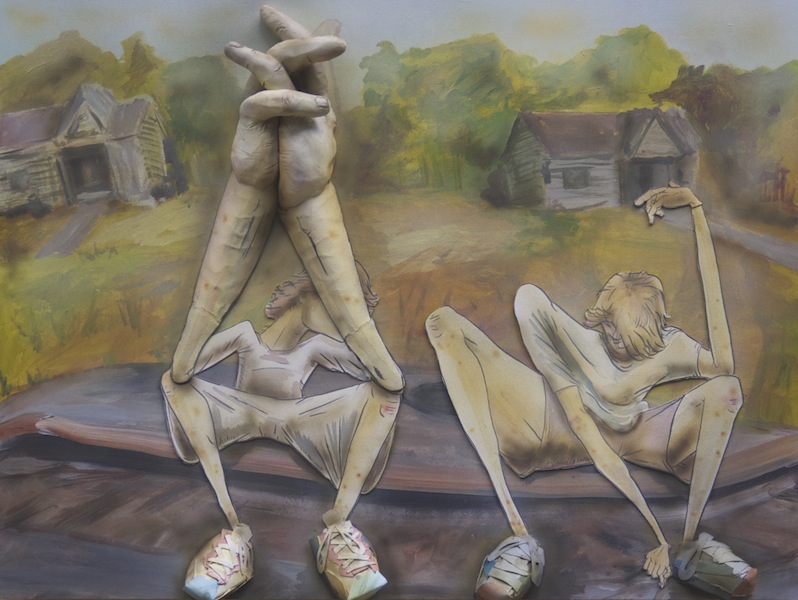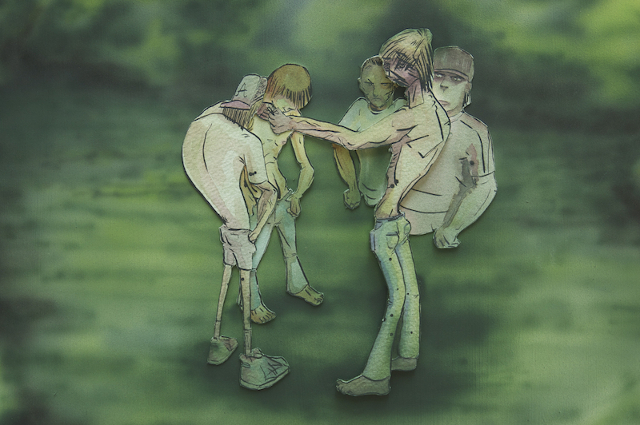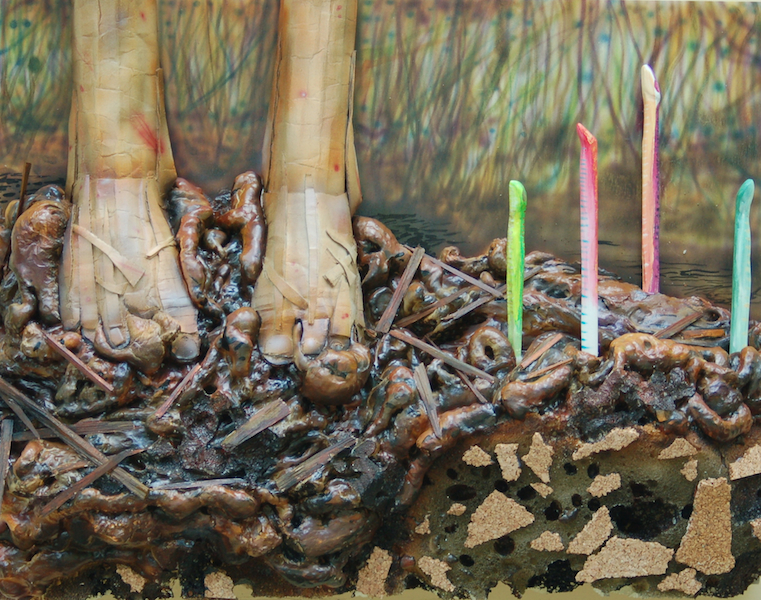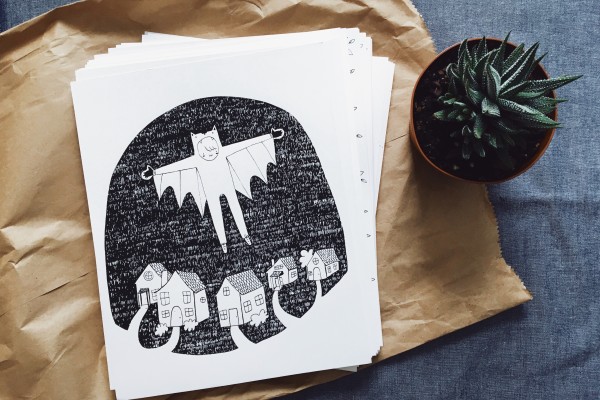You know what they say: One man’s trash is another man’s gallery opening. Artist Nick Madden‘s tools of the trade can be anything from tempura paints to twisted wire and scrap wood found in a trash heap. The works that he creates from these often-discarded items are filled with humor and memories of childhood past. Whether it’s a mixed media piece depicting hot summer days or found object sculptures that are reminiscent of Jim Henson’s Dark Crystal, Madden gives new life to the past in eclectic fashion.
CommonCreativ talked to Madden about his influences, where he finds his materials, and his life as an elementary school art teacher.
Common Creativ: Have you always been an artist?
Nick Madden: My older sister was in a bad car wreck when I was four. I remember her coming home unable to walk, with stitches on her face and an eye bandaged shut. My dad took a lot of polaroids of her and the car she was in for insurance purposes. I swiped the photos one day, went into my room, and drew copies of them all on sheets of paper. A couple days later, my parents found them and called me over. I thought for some reason I was in trouble for drawing the photos, but they started praising me for drawing them so well. I knew I wanted to be an artist right then and there. It’s kind of fitting, looking back on it, that those drawings got me started. I still have them, and they’re so sweet and funny, but also dark and kind of scary. I like to balance those kinds of emotions in my work.
CC: You work with many forms of media—does the subject of the piece influence what media you will use?
NM: I think the subject usually dictates the materials. I’m sitting on top of a basement of ever-growing heaps of found objects and scraps of wood that are waiting for me to pull from if the image calls for it. I recently finished a large installation at WonderRoot, a tidal wave, that consists pretty much entirely of found furniture and wood. The scale of that work called for big table legs and bedposts. Lately, I’ve been working with hardware store supplies like balsa wood and foam insulation.
CC: Do you consider yourself a found artist or a folk artist?
NM: I’m really inspired by both. I love the idea of giving old things new life. That really sank in for me when I went up to my grandmother’s house after she died. There was all of this stuff lying around that she either cherished deeply or she simply won at a county fair. I’d never know which. But it’s all imbued with some kind of meaning or energy. I like to think about old or used materials and where they’ve been, what kind of life they’ve had. I’m also a big folk art fan, but I don’t consider myself one. Their compulsion to make stuff out of what most people consider junk or low-end materials is very inspiring to me.
CC: What do you think of the Atlanta art scene?
NM: I can’t see Atlanta going anywhere but up. I’ve lived here my whole life and I’m an optimist when it comes to this city. It’s better than it has ever been. We’re never going to be a New York, or L.A., or Chicago, or even a Miami. I think we shouldn’t even try. We need to forge our own path, and I see a lot of creative and energetic and optimistic people in this city doing that. I once overheard someone talk about the identity crisis that Atlanta suffers from. On the other hand, when you think about it, we’re Terminus, the end of the line. All sorts get off at the end of the line. Let’s embrace that and move forward.
The Atlanta art scene still feels new to me. I’m a late bloomer (I was a bit of a hermit for a while) so I’m still meeting new artists and familiarizing myself with the work in this city. I love how dynamic everyone’s work seems. You hear “It’s an exciting time right now” a lot. And it is. It seems like there are all these opinions from artists, gallery owners, critics, of where the art scene should go. Should we spend more energy educating the public so that they will buy more art? Are galleries doomed in this city? How do we keep all the artists here? Do we need a central arts district? The fact that there are so many questions and just as many strong opinions is really exciting to me. It proves that people are thinking and worrying about it, and therefore coming up with new ways to embrace and promote the arts. I see it with WonderRoot and Dashboard just to name a couple. They seem to be taking big risks.
CC: As an artist and an art teacher, do you pass all of what you have learned onto your students, or do you let them make their own way?
NM: It’s a two-way street. I love sharing what I’ve learned with people. My students are no exception. If I meet a new artist or come across some new work and it seems like it can translate into what I do with kids from kindergarten to third grade, then I’ll do it. I want to get every local artist into the classroom with my kids. It’s so important to make them realize that artists and creative thinkers are vital parts of their community. It’s OK to be strange and make weird stuff. On the other hand, I get a huge amount of inspiration from them. I’ve done entire series of work based on some of the colors my students mix using tempera paint. I love seeing how their brains work, how they draw lines or cut shapes. It’s raw and very uninhibited. It goes back to that compulsion to make stuff that inspires me so much.
For more of Nick Madden’s art, visit nickmaddenart.com.

